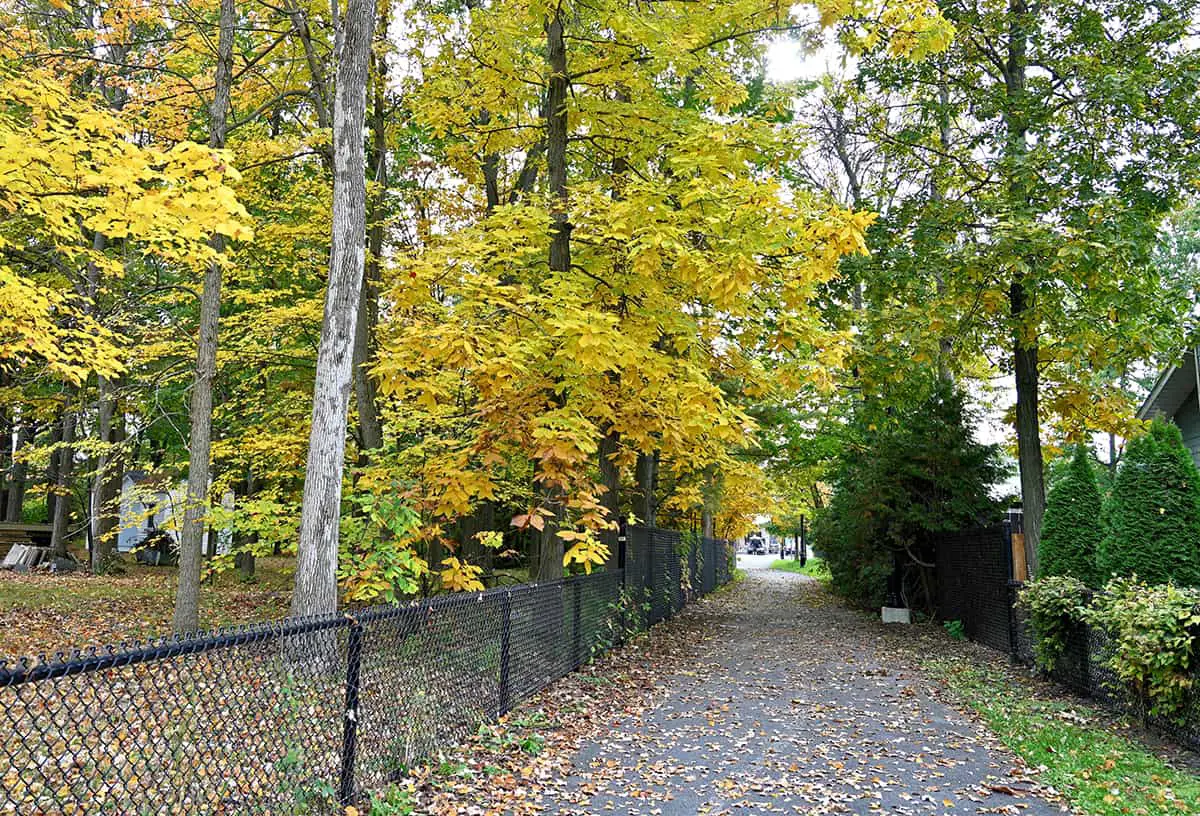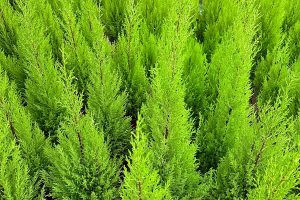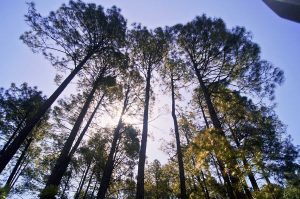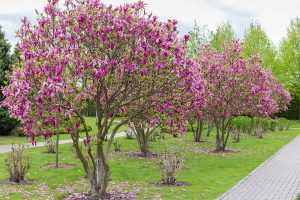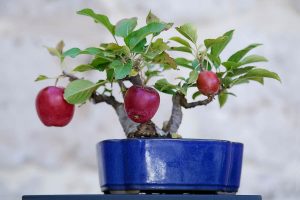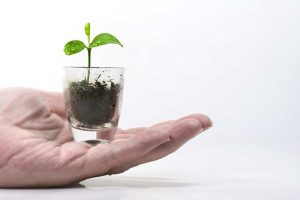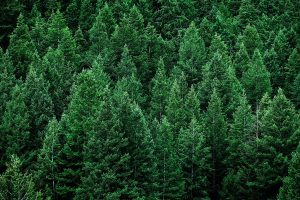Hickory trees are a valuable part of American woodlands, known for their strength, resilience, and diverse uses. These deciduous trees belong to the Carya genus and are native mostly to China, India, and North America. Hickory wood is recognized for its toughness and shock resistance, making it an ideal material for tools and sports equipment.
With their compound leaves and sturdy trunks, hickory trees also play a role in landscaping. In the spring, they provide ample shade with their dense foliage and, come fall, display a stunning array of yellow leaves. Some species, like the shellbark hickory, boast ornamental value and historical significance, though they have become scarce in their natural habitats.
Understanding hickory trees can enrich your knowledge of North American flora and help you appreciate these giants of the forest.
| Common Name | Hickory |
| Botanical Name | Carya spp. |
| Family | Juglandaceae |
| History & Origin | Native to North America, Asia |
| Tree Type | Deciduous |
| Mature Size | Varies widely, typically 60-100 ft tall |
| Hardiness Zone | Varies by species, generally 4-9 |
| Leaf Type | Compound, often with 5-9 leaflets |
| Bark Type | Varies, often shaggy or ridged |
| Nut Type | Edible or inedible, varies by species |
| Common Problems | Pests, diseases, and environmental stress |
Table of Contents
- Types of Hickory Trees
- Shagbark Hickory (Carya Ovata)
- Pignut Hickory (Carya Glabra)
- Mockernut Hickory (Carya Tomentosa)
- Bitternut Hickory (Carya Cordiformis)
- Shellbark Hickory (Carya Laciniosa)
- Scrub Hickory (Carya Floridana)
- Sand Hickory (Carya Pallida)
- Red Hickory (Carya Ovalis)
- Black Hickory (Carya Texana)
- Nutmeg Hickory (Carya Myristiciformis)
- Water Hickory (Carya Aquatica)
- Pecan (Carya Illinoinensis)
- Southern Shagbark Hickory (Carya Carolinae-Septentrionalis)
- Mexican Hickory (Carya Palmeri)
- Identification of Hickory Trees
- Care for Hickory Trees
- Pests and Diseases
- Interesting Facts About Hickory Trees
- Frequently Asked Questions
- What are the distinguishing features of different hickory tree varieties found across various states?
- How can you identify a hickory tree by its leaves or fruit?
- What are the unique characteristics and uses of hickory wood and nuts?
- How many varieties of hickory trees are there, and which are the most common?
- Is it safe to consume the nuts from all types of hickory trees, and how are they typically used?
Types of Hickory Trees
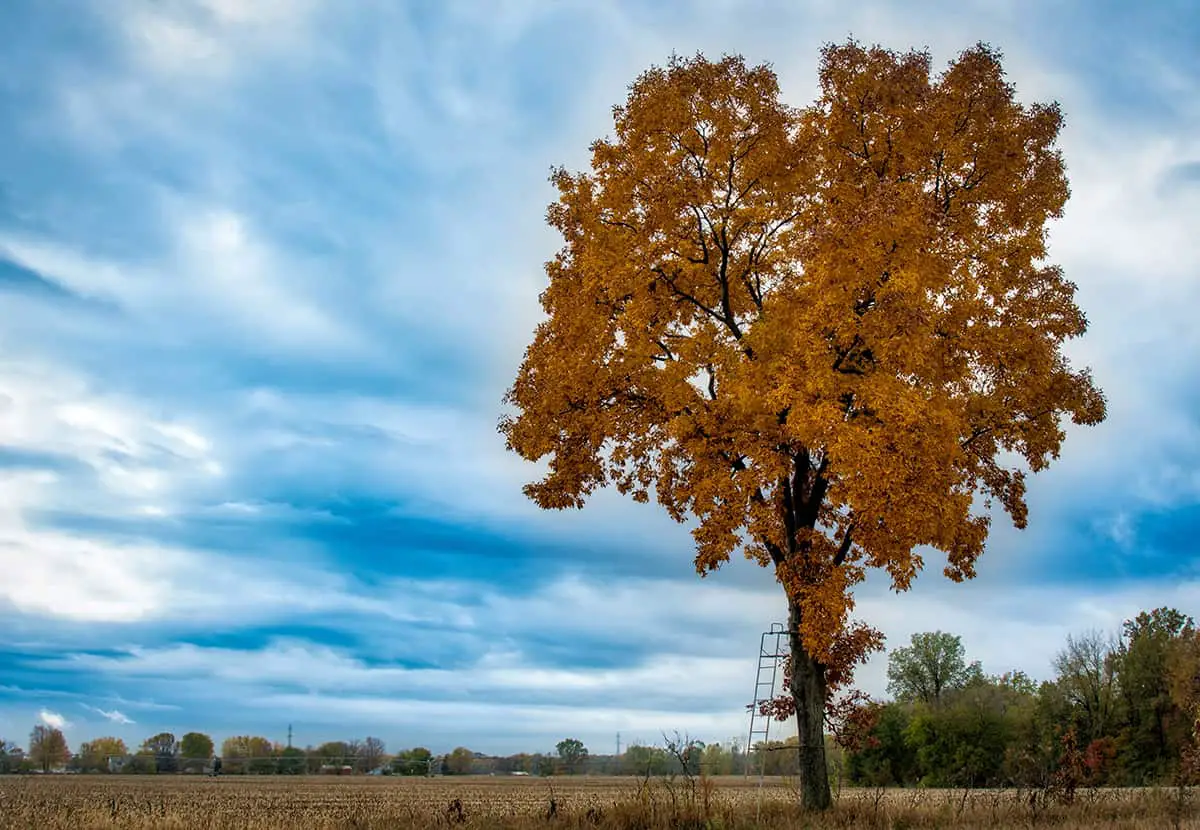
Hickory trees, known for their hardwood and edible nuts, belong to the genus Carya and include a range of species, each with unique characteristics. Here’s a closer look at the various types you might encounter.
Shagbark Hickory (Carya Ovata)
The Shagbark Hickory is easily identified by its distinctive bark that peels away in large strips. This tree grows throughout eastern North America.
Pignut Hickory (Carya Glabra)
You’ll recognize the Pignut Hickory by its smooth bark and small, pear-shaped fruits. It’s common in dry forests and produces nuts that vary in taste.
Mockernut Hickory (Carya Tomentosa)
With its large leaves and hard-shelled fruit, the Mockernut Hickory is prevalent in the eastern United States. Its nuts are sweet and attract wildlife.
Bitternut Hickory (Carya Cordiformis)
Identified by its yellow buds and bitter nuts, the Bitternut Hickory is the fastest growing of the hickory species and has a tall, slender form.
Shellbark Hickory (Carya Laciniosa)
The Shellbark Hickory, similar to the Shagbark, has large, shaggy bark but produces larger nuts. It’s often found near wetlands.
Scrub Hickory (Carya Floridana)
Scrub Hickory thrives in the sandy soils of Florida. It’s a smaller, shrubbier variety known for its tolerance to drought.
Sand Hickory (Carya Pallida)
The Sand Hickory is adapted to sandy terrains and features thin, lance-shaped leaflets. It’s also known for its strong wood.
Red Hickory (Carya Ovalis)
Red Hickory, often confused with the Pignut Hickory, sports red-tinged leaf petioles. It’s a preferred species for its resistance to disease.
Black Hickory (Carya Texana)
With its dark, scaly bark, the Black Hickory populates the southwestern regions of the hickory range. It’s a small to medium-sized tree.
Nutmeg Hickory (Carya Myristiciformis)
The Nutmeg Hickory is rare and known for its nutmeg-scented nuts. Its habitat is often limited to river valleys in the southeastern US.
Water Hickory (Carya Aquatica)
Living up to its name, the Water Hickory withstands flooded environments. Its long, slender nuts are distinctive features.
Pecan (Carya Illinoinensis)
Famous for its delicious nuts, the Pecan tree is a large species found in southern and central parts of the United States.
Southern Shagbark Hickory (Carya Carolinae-Septentrionalis)
Closely related to the Shagbark, the Southern Shagbark Hickory is mostly found in the southeastern US. It prefers well-drained soils.
Mexican Hickory (Carya Palmeri)
The Mexican Hickory is found in northeast Mexico and has only recently been noted for its distinctness from other hickories. It has a slender appearance and a smaller range.
Identification of Hickory Trees
Identifying hickory trees involves examining specific characteristics. Your knowledge of their leaves, bark, nuts, and habitat preferences will aid in accurate identification.
Leaves

Hickory tree leaves are compound, meaning each large leaf consists of multiple leaflets. Usually, you’ll find five to nine leaflets on one leaf stalk. These leaves are arranged in an alternate pattern on the twig, which is a key characteristic of hickories. In the case of the shellbark hickory, you can expect large leaves with many leaflets.
Bark
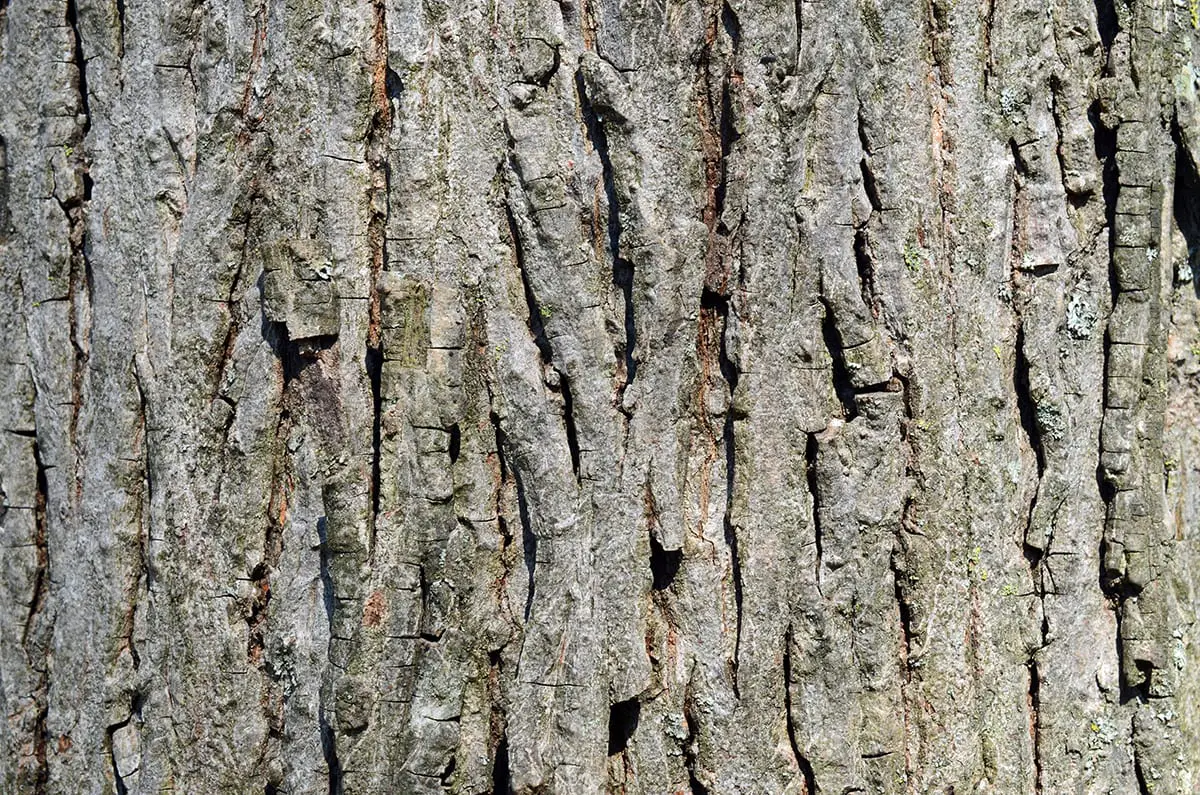
The bark of a hickory tree varies among species, but most share some common traits. Young trees often have smooth bark that becomes more ridged and furrowed as the tree matures.
Nuts

Hickory nuts are typically large with a hard, bony shell. The outer husk will split open as the nut matures. Depending on the species, the thickness of the husk and the size of the nut vary.
Habitat Preferences
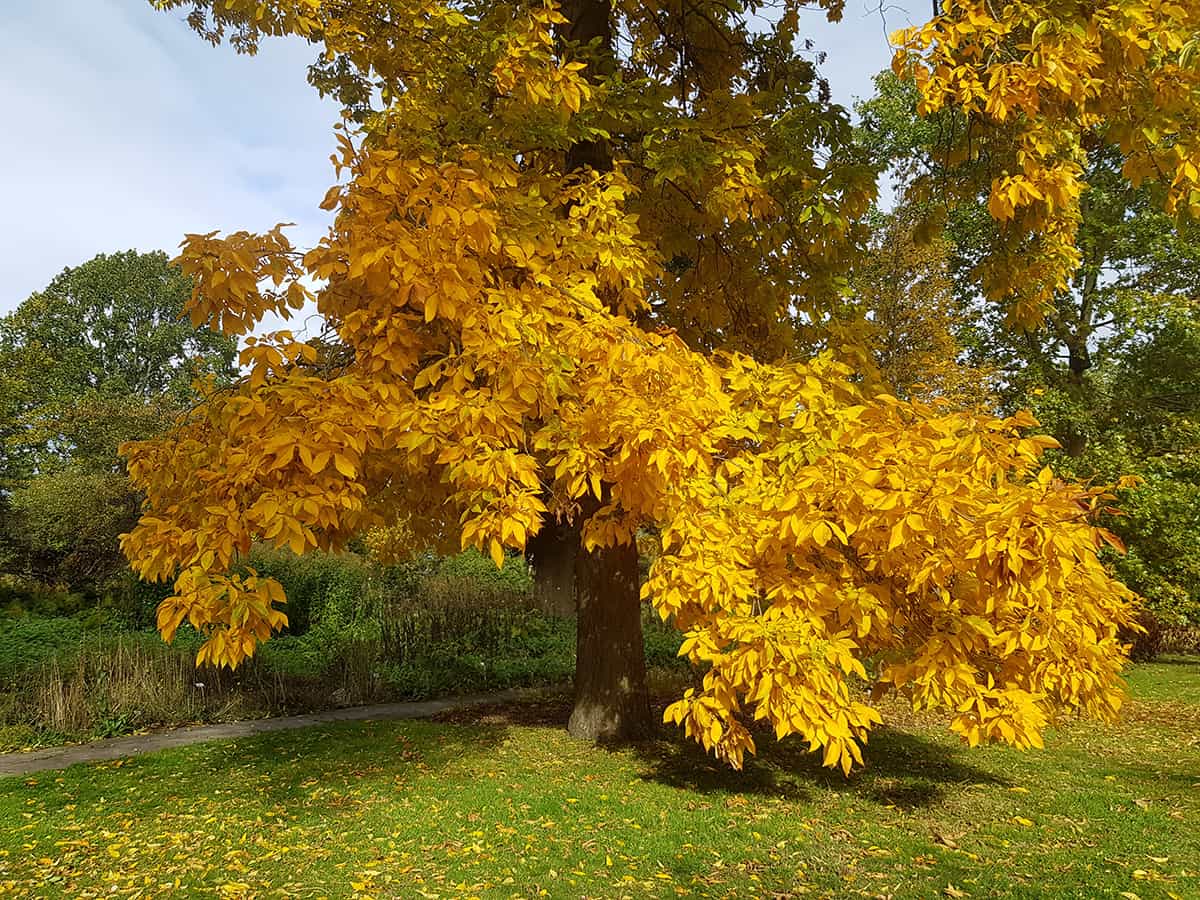
Hickory trees prefer well-drained soils and are commonly found in mixed deciduous forests. They thrive in areas with full sun to partial shade and are adaptive to a wide range of environmental conditions within their native habitat.
Care for Hickory Trees
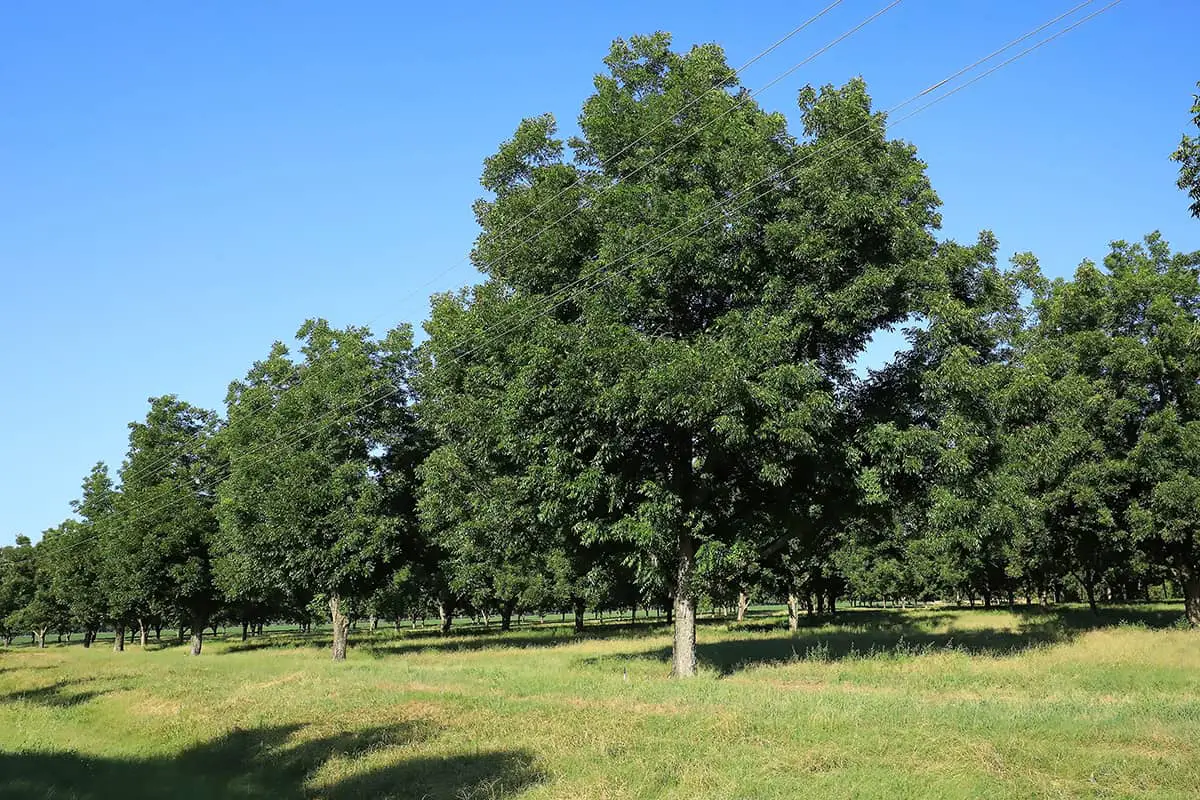
To ensure the health and longevity of your hickory trees, consider the specific needs of these hardy plants. Tailor your care routine to the tree’s soil type, the usual temperature range, water requirements, light exposure, and space considerations.
Soil
You provide the best foundation for your hickory trees by ensuring the soil is deep, well-drained, and fertile. Hickories thrive in soil with a pH between 6.0 and 7.5. Adequate soil depth allows for their extensive root systems. Test your soil and amend it if necessary to meet these conditions.
Temperature
Your hickory trees naturally tolerate a wide range of temperatures once established. They are hardy in USDA zones 4 through 8. Protect young trees from extreme cold with mulch or a burlap wrap.
Water
Water your hickory trees deeply and infrequently to promote strong root growth. Young trees benefit from weekly watering during dry spells. Established trees are drought-tolerant but still need moisture during prolonged dry periods.
Light
Hickory trees require full sunlight to develop properly. Ensure they receive at least six hours of direct, unfiltered light daily. Avoid shaded locations that can stunt growth and reduce nut production.
Spacing
Give your hickory trees plenty of room to grow. Space them at least 40 to 60 feet apart. This avoids crowding and allows room for their wide-reaching branches and roots. Proper spacing reduces competition for nutrients and light.
Pests and Diseases
Hickory trees face various pests and diseases that can impact their health. You need to identify these threats quickly to manage them effectively.
Common Pests
The Pecan Weevil emerges in late summer. Look for adult weevils after heavy rain, as they tend to cause nut damage during this time.
Caterpillars may also pose a threat, especially to young hickory trees. Although they’re less harmful to mature trees, monitoring is wise.
Disease Management
Leaf Spot is a disease indicated by reddish-brown and brown spots on leaf surfaces. It can lead to premature leaf drop. There’s no reliable control once it occurs, but sanitation helps reduce its spread.
Following a leaf spot, Witches’ Broom may occur. It shows as yellow and white spots on leaves. Removing affected foliage is crucial.
By staying vigilant and taking prompt action, you can protect your hickory trees from these pests and diseases.
Interesting Facts About Hickory Trees
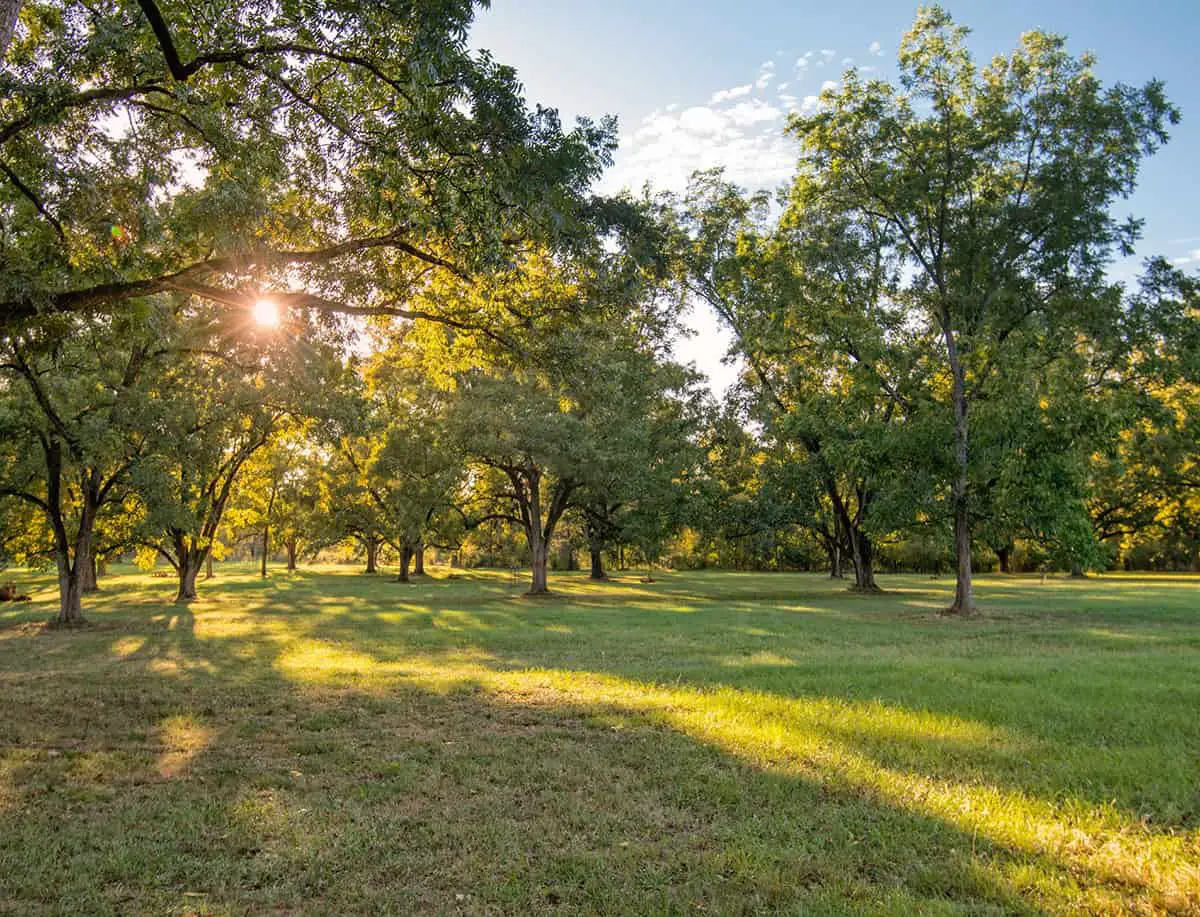
Hickory trees are part of the Carya genus. They grow primarily in temperate regions. You often find them in eastern North America. They thrive in hardwood forests alongside oaks.
Hickory wood is noted for its strength. It’s because of this that people use it in tools. Think ax handles and baseball bats. The wood also imparts a distinctive flavor in smoked meats.
The bitternut hickory prefers moist bottomlands. This tree variety adapts well to urban conditions. It can tolerate clay soils and dryer conditions. You’ll find this fact useful if you’re considering it for landscaping.
The shagbark hickory is known for its distinctive bark. It peels away from the trunk in large plates. This gives it a rugged look that draws attention in any setting.
Another type, the shellbark hickory, resembles the shagbark. However, it was once more prevalent in America’s bottomlands. Now, it’s less common in the wild. The bark and large winter buds are notable features.
Remember, hickory trees produce nuts. These nuts provide food for wildlife. Some varieties are also tasty and nutritious for humans. They contain good fats and minerals.
Each hickory tree species has unique characteristics. Yet, they share some general traits. These traits position them as valuable in ecology and industry alike.
Frequently Asked Questions
What are the distinguishing features of different hickory tree varieties found across various states?
Different hickory tree varieties exhibit a range of features. You may notice variations in bark texture, with some having shaggy bark, and others featuring smooth, plate-like bark. Leaf size and nut characteristics also vary by species, offering clues to their identity.
How can you identify a hickory tree by its leaves or fruit?
You can identify a hickory tree by its leaves, which are compound and usually comprise five to nine leaflets with a terminal leaflet. The fruit, a type of nut, is typically encased in a hard shell with a husk that splits open when mature.
What are the unique characteristics and uses of hickory wood and nuts?
Hickory wood is tough and resilient, making it ideal for tools and sporting equipment. The nuts provide a rich, buttery flavor and can be eaten raw or cooked. They’re also used in making pies and other desserts.
How many varieties of hickory trees are there, and which are the most common?
There are around 18 species within the Carya genus. The most common in the United States include the shagbark, shellbark, and pignut hickory. Each species has distinct features that make them more suited to particular environments.
Is it safe to consume the nuts from all types of hickory trees, and how are they typically used?
Yes, the nuts from all types of hickory trees are safe to consume. They are often harvested for their taste and nutritional value. Hickory nuts are typically used in baked goods, or they can be toasted and eaten as a snack.
